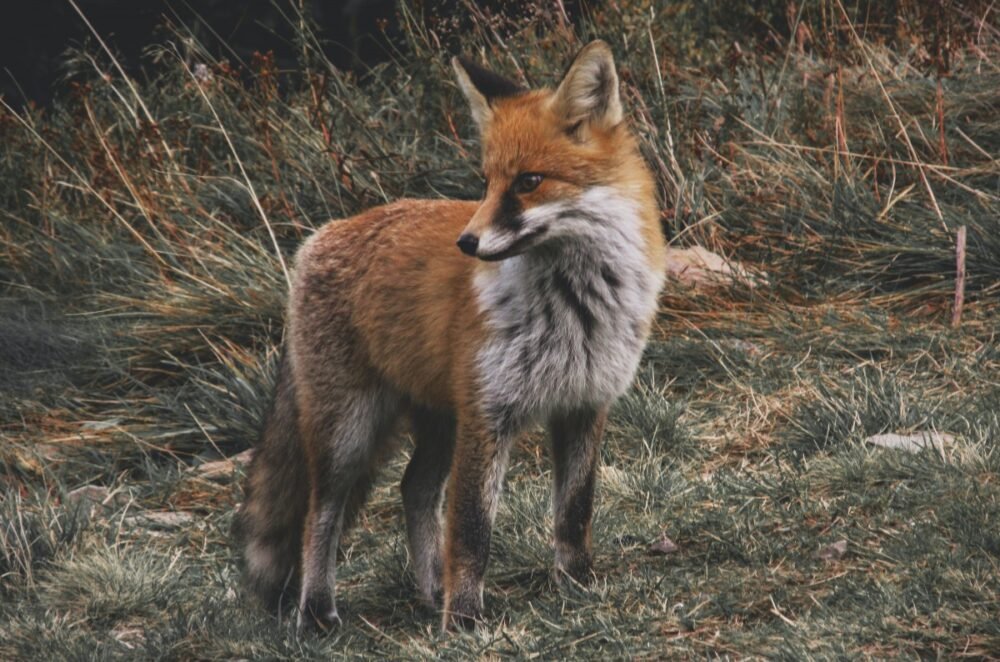Protecting animals: Ireland’s first wildlife hospital

Since the pandemic, working from home and lacking social contact, more and more people have discovered nature for themselves. With that also comes an increasing awareness of animals living on land and in the sea – especially when they’re injured. In Ireland’s first wildlife hospital, staff and volunteers are busier than ever.
Where people once met to have a pint of Guinness and the room was filled with music and the babble of voices, there are now injured animals being treated. In February, the first wildlife hospital in Ireland opened on the grounds of a closed pub. That was about time.
Since the pandemic started, people feel the urge to go for walks in nature more and more. That again led to a significant increase in awareness of wildlife. One year into the Covid-pandemic, the demand for the rehabilitation of wild animals has rocketed.
“Unfortunately huge numbers of our native wildlife are injured every day, mostly as a direct result of human activity”, says Aoife McPartlin, a spokesperson from Wildlife Rehabilitation Ireland (WRI), that runs the hospital. There are rehabilitators around the country working in their own homes caring for sick and injured wildlife. “These people are overwhelmed due to the number of animals requiring care and don’t have the space to cater for the demand.”
Additional to the increasing demand for treating injured wildlife, until now there was no organization representing all types of wildlife rescue and rehabilitation. The few individuals and organizations around the country don’t receive any financial support and have no support network among themselves.
WRI has responded to that by creating an interim Emergency Wildlife Hospital in Garlow Cross, County Meath. Because the organization is a member of the Irish Environmental Network, they receive core funding from the Department of the Environment, Climate and Communications. With that, they are able to meet the huge demand of helping Ireland’s wild animals.
On a daily basis, they see a broad range of animals from tiny garden birds right up to otters and badgers. “The most common injuries we see are as a result of road collision, cat attack, litter and habitat destruction”, says McPartlin. “Unfortunately, we also see animals who have been victims of wildlife crime.” Last month, they had three snared badgers, a poisoned buzzard, a peregrine falcon who had been shot, and a snared fox.
When someone detects an injured animal and calls the National Wildlife Helpline, one of the volunteers will go out to the animal in question and decide whether it needs to go straight to a vet clinic or to the hospital. “When an animal arrives at the hospital it is triaged and made comfortable,” says McPartlin. “Once it is less stressed, it is examined and treated accordingly.” As soon as the fox, bat, or hedgehog is fit enough, it will be rehabilitated in the hospital until it’s ready to be returned to the wild. This is important, because each animal plays an important role in the biodiversity of a specific area.
Although Ireland might not be known for its variety of wild animals, there aren’t only birds and foxes on the island. With a little bit of luck, you can also see badgers, wild deer, hedgehogs, pine martens, and not to be forgotten: marine mammals and otters. “All of life depends on that biodiversity for survival and humans in particular rely on it for food, clean air and water, clothing and building materials, as well as for medicines, and places in which to unwind and reconnect with nature”, says McPartlin. By rehabilitating wildlife and returning them to their natural habitat that balance can continue to exist.
According to McPartlin that is why it is important that people see themselves as part of nature and not better than, or different from it. “They need to learn to share the space and respect the environment.” That means taking responsibility for litter; allowing gardens to flourish and grow, rather than cutting; and building sympathetically, which means leaving the hedgerow and not replacing it with a wall, for example. “Wildlife and their habitats are our living heritage”, says McPartlin.
Part of that is also taking care of all the creatures living there. If a person discovers an obviously injured animal, they should call the helpline on 0818 877766, where they will be able to talk to an expert who can advise them. “In a lot of cases our responders will go out to the animal, but in other cases the person themselves may be able to help with guidance from our advisor.” According to McPartlin, people often mistake a perfectly healthy young animal for an orphan, “so we always appeal to people to observe the situation before interfering.” But if someone is unsure, they can always call the helpline.